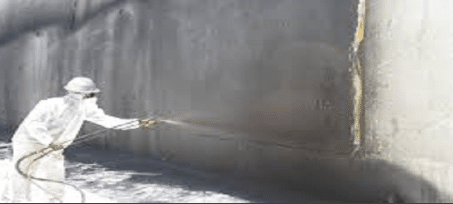Concrete Waterproofing Methods You Should Know In El Cajon

Waterproofing your concrete can help to protect it from water damage and extend its lifespan. There are a number of different waterproofing methods that you can use, depending on the type of concrete and the location.
Penetrating Sealers
Penetrating sealers are designed to penetrate into the concrete and form a barrier against water and other liquids. They are typically clear or translucent, so they will not change the appearance of the concrete.
Surface Sealers
Surface sealers form a protective layer on the surface of the concrete. They are available in a variety of finishes, including glossy, matte and textured.
Membranes
Membranes are thin layers of material that are placed over the concrete to create a barrier against water. They can be adhered to the concrete with an adhesive or mechanically fastened.
Injection Grouting
Injection grouting is a method of waterproofing cracks and voids in concrete. A waterproofing agent is injected into the cracks or voids, where it expands and forms a seal.
Coatings
Coatings are thick layers of material that are applied to the surface of the concrete. They can be applied by brush, roller or spray.
Cementitious Waterproofing
Cementitious waterproofing is a type of coating that contains cement. It is applied to the surface of the concrete and forms a hard, impermeable layer.
Crystalline Waterproofing
Crystalline waterproofing is a type of chemical treatment that reacts with the minerals in concrete to form an insoluble barrier against water. It can be applied to both new and existing concrete.
Bituminous Waterproofing
Bituminous waterproofing is a type of membrane that contains asphalt or coal tar. It is applied to the surface of the concrete and forms a flexible, impermeable layer.
Elastomeric Coatings
Elastomeric coatings are flexible, rubber-like coatings that are applied to the surface of the concrete. They are designed to resist water and movement, making them ideal for use on cracks and joints.
Metal Flashings
Metal flashings are strips of metal that are placed over joints and cracks in concrete. They help to prevent water from entering the structure.
Preformed Joint Seals
Preformed joint seals are made from a variety of materials, including rubber, neoprene and silicone. They are placed in concrete joints and act as a barrier against water and other liquids.
Polyurethane Injections
Polyurethane injection is a method of waterproofing cracks and voids in concrete. A two-part polyurethane resin is injected into the cracks or voids, where it expands and forms a seal.
Sheet Membranes
Sheet membranes are made from a variety of materials, including asphalt, rubber and PVC. They are placed on the surface of the concrete and act as a barrier against water.
Sprayed-On Coatings
Sprayed-on coatings are applied to the surface of the concrete with a sprayer. They can be made from a variety of materials, including acrylics, epoxies and urethanes.
Conclusion
Waterproofing your concrete can help to protect it from water damage and extend its lifespan. There are a number of different waterproofing methods that you can use, depending on the type of concrete and the location. For more information, contact Concrete Contractor El Cajon at (619) 473-4433.